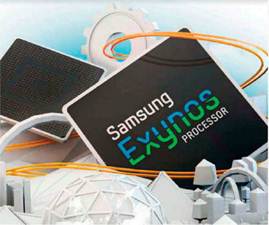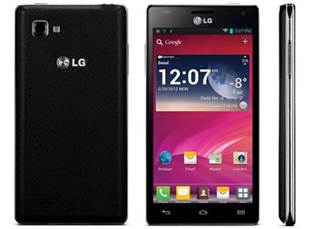Last year, dual-core processors were all
the rage. As users’ demands for more powerful smartphones grow stronger,
chipset makers like NVIDIA have their work cut out for them in the form of
their quad-core NVIDIA Tegra 3 chipset. The question then is: will the more
powerful Tegra 3 require more energy to run? Showcasing Variable Symmetric
Multiprocessing (vSMP) technology, the chip addresses the problem of energy
usage in Tegra 2. The new quad-core processor with a fifth companion core for
low power needs is said to take up 61% less power and offer up to 12 hours of
video playback compared to the existing Tegra 2 mobile processing solution.
However, some manufacturers like Samsung and Huawei have opted to rely on their
own chipsets instead. Take for example. The Galaxy S III comes with an Exynos 4
Quad chip, one that Samsung promises will double the processing power at a 20
percent lesser power consumption over its predecessor, the 45nm process-based
Exynos 4 Dual.

Dissecting
the “Mythical” quad-core
Specifications
Model: HTC One X
·
Network: GSM 850/
900/ 1800/ 1900
·
HSPA 850/ 900/ 1900/ 2100
·
Operating system:
Google Android 4.0
·
Processor: NVIDIA
Tegra 3 quad-core 1.5GHz
·
Memory: 32GB
internal/ 1GB RAM
·
MicroSD expandability: N/A
·
Display:
4.7-inch/ 1280 x 720 pixels/ Super LCD 2
·
Rear camera:
8-megapixels/ f2.0/ BSI sensor/ Autofocus/ LED flash
·
Connectivity:
Built-in GPS with A-GSP and Google Maps/ NFC/ Bluetooth 4.0/ DLNA/ USB 2.0/
WLAN 802.11 a/b/g/n
·
Battery: 1800mAh
·
Model: LG
Optimus 4X HD
·
Network: GSM 850/
900/ 1800/ 1900
·
HSDPA 900/ 1900/ 2100
·
Operating system:
Google Android 4.0
·
Processor: NVIDIA
Tegra 3 quad-core 1.5GHz
·
Memory: 16GB
internal/ 1GB RAM
·
MicroSD expandability: microSD (up to 64GB)
·
Display:
4.7-inch/ 1280 x 720 resolution/ HD-IPS LCD
·
Rear camera: 8-megapixels/
Autofocus/ LED flash
·
Connectivity:
Built-in GPS with A-GSP and Google Maps/ NFC/ Bluetooth 3.0/ DLNA/ USB 2.0/
WLAN 802.11 a/b/g/n
·
Battery: 2150mAh

Model: Samsung Galaxy S III
·
Network: GSM 850/
900/ 1800/ 1900
·
HSDPA 850/ 900/ 1900/ 2100
·
Operating system:
Google Android 4.0
·
Processor: Exynos
4212 Quad quad-core Cortex-A9 1.4 GHz
·
Memory:
16/32/64GB internal/ 1GB RAM
·
MicroSD expandability: microSD (up to 64GB)
·
Display:
4.8-inch/ 1280 x 720 resolution/ HD Super AMOLED
·
Rear camera: 8-megapixels/
f2.6/ BIS sensor/ Autofocus/ LED flash & Zero Shutter
·
Connectivity:
Built-in GPS with A-GSP and Google Maps/ NFC/ Bluetooth 4.0/ USB 2.0/ WLAN
802.11 a/b/g/n
·
Battery: 2100mAh

Quadrant Score
We subjected all devices to the Quadrant
benchmark which can be downloaded on Google Play for free. The benchmark
evaluates the CPU, memory, I/O, and 3D graphics of Android devices. The Galaxy
S III’s Exynos 4 Quad quad-core processor blew both its NVIDIA Tegra 3 equipped
competitors’ results out of the water by a large margin.
·
LG Optimus 4X HD:
3,116
·
Samsung Galaxy S III: 5,267
·
HTC One X: 4,025
(Higher is better)
Battery Life
All three quad-core smartphones were put
through our trademark battery test which includes having a video looped
non-stop under the following conditions: Brightness and volume at 100%, Wi-Fi
and Bluetooth connectivity turned on and constant data streaming through email
and Twitter. Due to its excellent battery mileage of 581 minutes, the Samsung
Galaxy S III also emerged top in this test.
·
LG Optimus 4X HD (2150mAh, 3.8V): 280
·
Samsung Galaxy S III (2100mAh, 3.8V): 581
·
HTC One X (1800mAh, 5V): 339
(In minutes, higher is better)
And the best Quad-Core Android Smartphone is…
Samsung Galaxy S III
Samsung has certainly not disappointed us –
the Samsung Galaxy S III is probably the best Android smartphone out there now.
While there are some who might not be big fans of its tacky exterior and
simplified TouchWiz interface, Samsung certainly has done well be the Android
4.04 software, while also throwing is software enhancements such as S Voice,
Best Photo and Burst Shot as well as Buddy Photo Share and more. That’s not
forgetting its powerful quad-core processor, crisp 4.8-inch HD Super AMOLED
screen, 1 GB of RAM and plenty of storage space (not to mention expandability
via microSD or Dropbox). To top it all off, the superb battery life of 9 hours
45 minutes was the best yet in all our mobile battery tests done this year.

Samsung
Galaxy S III
LG Optimus 4X HD
The LG Optimus 4X HD might not be the best
quad-core device out of the three listed but it is certainly one that offers
the best bang for your buck. With a bright 4.7-inch HD-IPS LCD screen, an
8-megapixel camera and microSD expansion, the asking price is also
significantly lower than its quad-core peers. The only dent in its overall
performance is in its average battery life but this is nothing an external
battery pack or two can’t solve.

LG
Optimus 4X HD